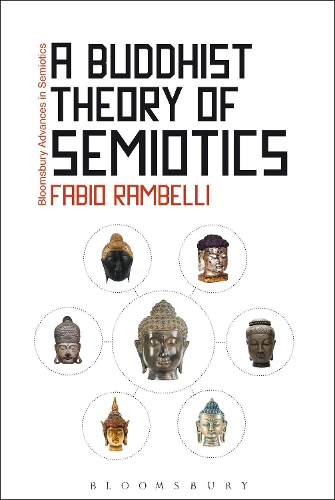
A Buddhist Theory of Semiotics: Signs, Ontology, and Salvation in Japanese Esoteric Buddhism
(Paperback)
Available Formats
Publishing Details
A Buddhist Theory of Semiotics: Signs, Ontology, and Salvation in Japanese Esoteric Buddhism
By (Author) Professor Fabio Rambelli
Bloomsbury Publishing PLC
Bloomsbury Academic USA
14th March 2013
United States
Classifications
Tertiary Education
Non Fiction
Eclectic and esoteric religions and belief systems
121.68
Physical Properties
Paperback
280
Width 156mm, Height 234mm
399g
Description
One of the first attempts ever to present in a systematic way a non-western semiotic system. This book looks at Japanese esoteric Buddhism and is based around original texts, informed by explicit and rigorous semiotic categories. It is a unique introduction to important aspects of the thought and rituals of the Japanese Shingon tradition. Semiotic concerns are deeply ingrained in the Buddhist intellectual and religious discourse, beginning with the idea that the world is not what it appears to be, which calls for a more accurate understanding of the self and reality. This in turn results in sustained discussions on the status of language and representations, and on the possibility and methods to know reality beyond delusion; such peculiar knowledge is explicitly defined as enlightenment. Thus, for Buddhism, semiotics is directly relevant to salvation; this is a key point that is often ignored even by Buddhologists. This book discusses in depth the main elements of Buddhist semiotics as based primarily on original Japanese pre-modern sources. It is a crucial publication in the fields of semiotics and religious studies.
Reviews
Summing up, the main strength of this book is its success in offering a new analytical apparatus to clarify the semiotic structures that underlie the transmissions and practices of Shingon lineages, so often dismissed out of hand as rand and irrational. Rambelli manages admirably to avoid two pitfalls: he neither stays too close to the original texts, losing the analytical edge that makes this enterprise valuable, nor does he stray away from them that he ends up constructing a semiotic abstraction that forces alien concepts onto Shingon doctrine. -- Mark Teeuwen, Oslo University, Norway * Monumenta Nipponica 69:2 *
Author Bio
Fabio Rambelli is Professor and International Shinto Foundation Chair of Shinto Studies, Department of East Asian Languages and Cultural Studies, and Department of Religious Studies, University of California, Santa Barbara, USA.
